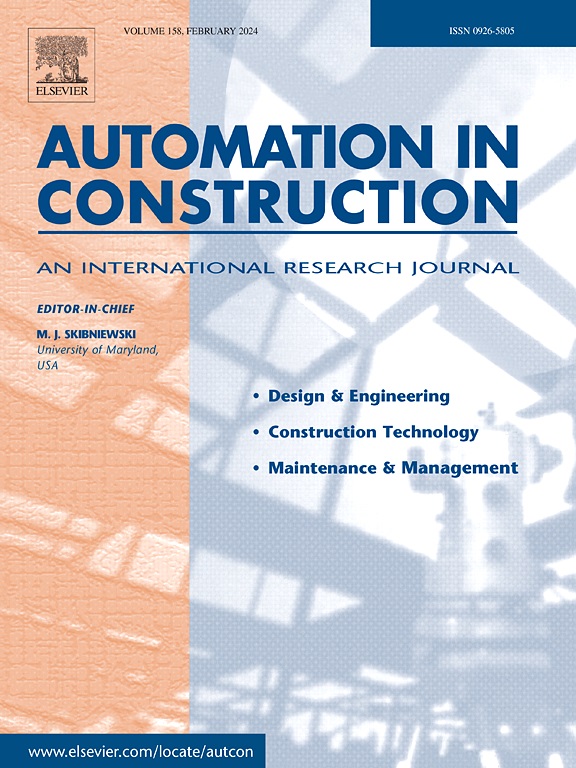利用激光扫描点云自动生成箱梁桥的几何数字双胞胎
IF 11.5
1区 工程技术
Q1 CONSTRUCTION & BUILDING TECHNOLOGY
引用次数: 0
摘要
几何建模是为现有桥梁结构创建数字孪生结构的关键步骤。由于缺乏自动化,几何建模步骤费时费力。本文提出了一种基于激光扫描点云的箱梁桥自动建模解决方案,包括外部和内部结构。该解决方案包括三种重要方法:构件分割、截面关键点提取和内部结构重建。结果表明,已建立的分割模型 BCR-Net 在组件分割方面的性能优于 PointNet++,在测试集上的 mIoU 为 0.9751。墩台、弯帽和箱梁内外结构尺寸的平均绝对误差分别为 0.27 %、0.38 %、0.47 % 和 0.48 %。这说明所提出的方法具有优异的建模精度,同时保证了比人工建模更高的效率,为桥梁结构的数字孪生建模提供了一种可行的解决方案。本文章由计算机程序翻译,如有差异,请以英文原文为准。

Automatic geometric digital twin of box girder bridge using a laser-scanned point cloud
Geometric modeling is a pivotal step in creating a digital twin for existing bridge structures. Its deficiency of automation makes geometric modeling step time-consuming and laborious. This paper presents a solution for automatically modeling box girder bridges, including external and internal structures, based on laser-scanned point cloud. The solution includes three vital methods: component segmentation, key points extraction of cross-section, and internal structure reconstruction. The results indicate that the established segmentation model, BCR-Net, exhibited better performance than PointNet++ in component segmentation, as demonstrated by mIoU of 0.9751 on the test set. The mean absolute error on the dimension of the pier, bent cap and external and internal structure of the box girder is 0.27 %, 0.38 %, 0.47 %, and 0.48 %, respectively. It means the proposed methods possessed excellent modeling accuracy while ensuring high efficiency than manual modeling, providing a promising solution for digital twin modeling of bridge structures.
求助全文
通过发布文献求助,成功后即可免费获取论文全文。
去求助
来源期刊

Automation in Construction
工程技术-工程:土木
CiteScore
19.20
自引率
16.50%
发文量
563
审稿时长
8.5 months
期刊介绍:
Automation in Construction is an international journal that focuses on publishing original research papers related to the use of Information Technologies in various aspects of the construction industry. The journal covers topics such as design, engineering, construction technologies, and the maintenance and management of constructed facilities.
The scope of Automation in Construction is extensive and covers all stages of the construction life cycle. This includes initial planning and design, construction of the facility, operation and maintenance, as well as the eventual dismantling and recycling of buildings and engineering structures.
 求助内容:
求助内容: 应助结果提醒方式:
应助结果提醒方式:


